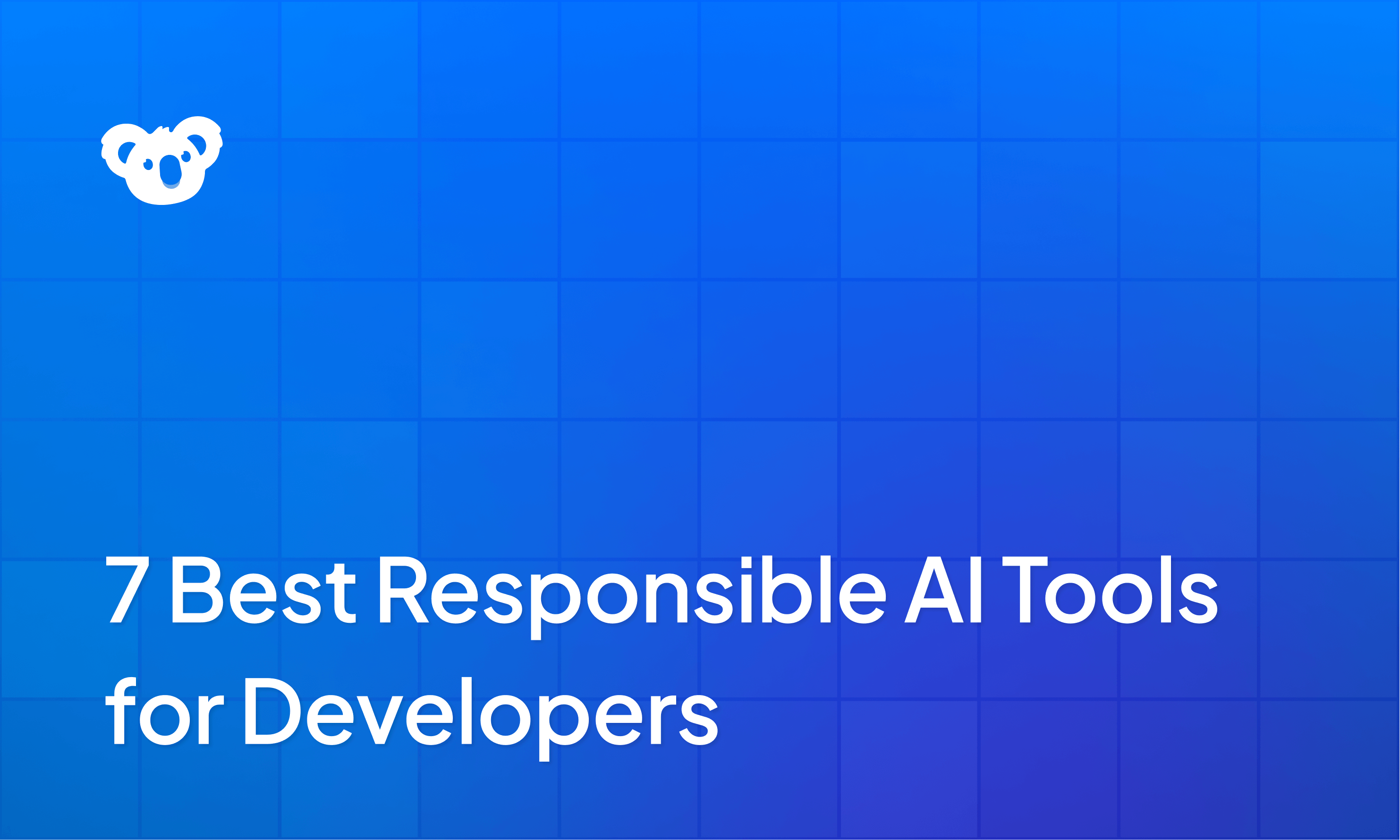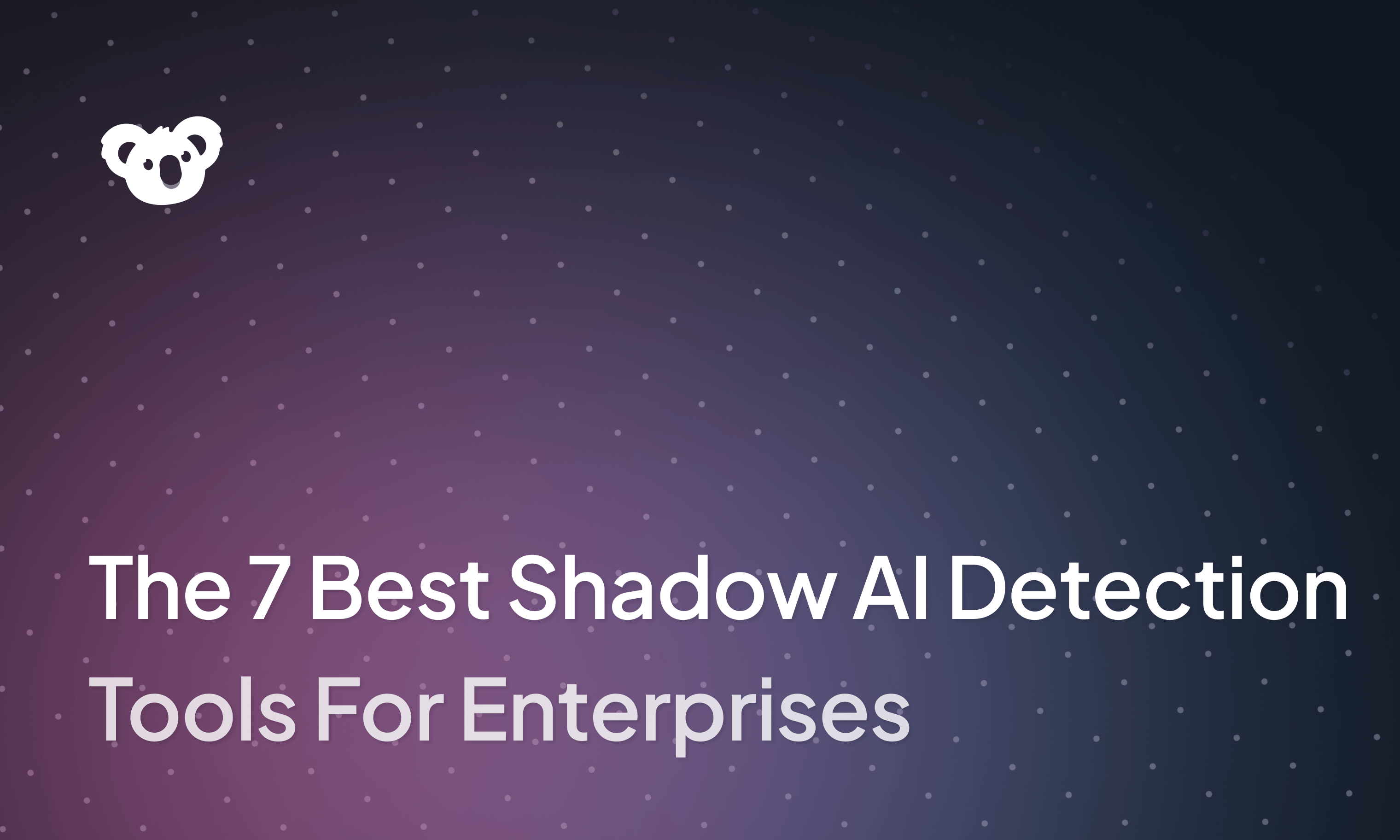


AI tools have spread quickly across organizations. A 2023 Salesforce report found that many employers have tried them at work, often without approval. Gartner’s research shows the problem will only intensify with shadow app usage expected to jump from 41% in 2022 to 75% by 2027.
The productivity gains are obvious, but without IT oversight, these tools create security and compliance blind spots. This is shadow AI. It often starts with good intentions, but it introduces AI-specific risks that traditional security tools weren’t designed to handle.
In this article, we’ll cover:
- What is shadow AI, and how does it start in organizations?
- How to detect and prevent it
- Best practices for adopting AI safely
What is shadow AI?
Shadow AI is the use of unauthorized AI systems without approval from IT or security teams. These tools operate outside your organization's official tech stack and bypass standard governance frameworks.
Unlike sanctioned AI platforms or internal LLMs that IT has vetted, shadow AI pops up when employees turn to consumer-grade tools to automate a process.
Common examples include:
- Employees using personal ChatGPT or Claude accounts to summarize strategy decks or customer emails.
- Developers inputting proprietary code into AI tools for coding or debugging help. For example, an engineer at Samsung Electronics accidentally exposed sensitive source code by pasting it into ChatGPT.
- Data analysts uploading large datasets with personally identifiable information (PII) into outside AI platforms to perform data analysis or visualization.
How does shadow AI start inside organizations?
Shadow AI gradually grows as employees find workarounds to complete their tasks faster.
Here's how it typically starts:
- Unclear policies: When you don't define acceptable AI use, employees make their own decisions about which tools to adopt.
- Individual experiments: Teams test tools like ChatGPT, Midjourney, or GitHub Copilot on their own. They paste in code snippets, customer queries, or internal documents to see what the AI can do. Without approval processes, these experiments become standard practice.
- Built-in SaaS features: Many SaaS vendors now include AI features powered by third-party models. When employees enable these features, they unknowingly route company data through external APIs that security teams haven’t reviewed.
- Browser-based signups: Employees can sign up for AI tools using work emails and credit cards without going through procurement. Browser-based tools require no installation, so they bypass endpoint security controls entirely.
Why shadow AI is risky for enterprises
Shadow AI is risky because it pushes sensitive data and workflows outside the guardrails of IT and security teams without you even knowing it.
The main risks include:
- Data privacy and IP leakage: Employees might paste customer data or proprietary code into external AI tools. If those tools store inputs or use them for model training, you could lose control of the data unless you have appropriate privacy settings.
- Regulatory non-compliance: Regulations like GDPR and HIPAA, along with compliance frameworks such as SOC 2, require organizations to tightly manage how they process and share data. Shadow AI tools can bypass those controls.
- No audit trail: These tools don’t connect to your logging systems, so you can’t see what employees shared or what the AI generated in return.
- Inconsistent accuracy and hallucination risk: Public AI models sometimes produce convincing but flat-out wrong outputs. If no one’s checking, those errors can end up in customer emails, financial statements, or even legal docs.
- Vendor lock-in and tool sprawl: Different teams adopt different AI tools for the same job. Over time, you’re left with a mess of overlapping subscriptions and zero centralized control.
Shadow AI vs. Shadow IT
Shadow IT refers to any technology that employees use without IT approval, such as SaaS tools, cloud storage, or collaboration platforms.
Shadow AI is a specific type of shadow IT involving AI systems. The risks run deeper because AI models process it and learn from your data. These models may store your sensitive inputs indefinitely, use them for model training, or process them in ways that break data residency rules. On top of that, outputs can be inaccurate or misleading, which introduces operational risks.
Here’s how they compare:
Shadow AI detection: How to spot it early
You can spot shadow AI early by looking for patterns that don’t fit normal IT or employee activity. The challenge is that many shadow AI tools operate in browsers or through third-party APIs, making them invisible to traditional shadow IT detection tools.
Here are some of the key signals to watch for:
- Unexplained API traffic: Monitor network logs for unusual outbound calls to AI model providers like OpenAI, Anthropic, or Google Cloud AI.
- Unusual data movement: Large text blocks, source code, or CSV uploads flowing out of your network can be a sign that employees are pasting content into external AI tools.
- Expense anomalies: Small recurring charges from AI tool vendors on corporate credit cards suggest employees are buying access outside procurement.
- Unusual employee behavior: Track unusual activity patterns, such as employees accessing external AI APIs during work hours or uploading documents to cloud services that they didn’t use before.
How to prevent shadow AI
You can prevent shadow AI by giving employees safe, approved alternatives and clear rules to follow.
Practical steps include:
- Create and enforce AI usage policies: Define approved tools, set data-sharing rules, and require reviews for sensitive use cases.
- Provide secure internal alternatives to prevent the use of shadow apps: Deploy AI platforms that meet your security and compliance requirements. If employees have access to sanctioned tools that solve their problems, they're less likely to use shadow apps.
- Train teams on acceptable vs. unacceptable tools: Run regular sessions on the risks of pasting code, PII, or confidential docs into public AI tools so they understand the stakes.
- Use DLP, prompt scanning, and access controls: Implement technical controls that detect and block risky AI usage. DLP tools can flag sensitive data that users are copying into browser windows. Prompt scanning can identify when employees are interacting with external AI models, but no solution is foolproof.
- Establish cross-functional AI governance boards: Bring together IT, security, legal, and business leaders to review AI adoption requests. Create an approval process so teams can get access to new tools quickly without bypassing governance.
Best practices for managing AI adoption safely
Before AI adoption spirals into a liability, it needs guardrails. The smart approach isn’t to ban every AI tool but to adopt it deliberately, with centralized policies and platforms.
Below are the key best practices to follow:
- Start with controlled pilot projects: Test new AI tools in limited environments before rolling them out broadly. This gives you time to evaluate risks, refine policies, and train users.
- Maintain central visibility over all AI initiatives: Create a registry of approved AI tools and require teams to register new tools before using them. Track usage patterns, data flows, and vendor relationships.
- Integrate AI into existing risk review and vendor approval processes: Treat AI tools like any other third-party service. Conduct security reviews, assess data residency requirements, and evaluate vendor certifications before approval.
- Continuously evaluate data residency and model risk: AI models change frequently. Vendors update their systems, retrain models, and change data handling practices. Regularly review vendor terms to make sure they still meet your requirements.
The role of AI governance in stopping shadow AI
AI governance is the set of policies, controls, and oversight that dictate:
- Who can use AI
- What data AI can access
- Which tools are approved
- How AI outputs are reviewed and audited.
It replaces ad-hoc, invisible usage with approved, monitored, and secure usage. This cuts off the conditions where shadow AI thrives.
For more on building effective AI governance frameworks, see our guides on AI governance and AI model governance.
Prevent shadow AI with Superblocks
Superblocks helps operationally complex enterprises manage shadow AI by enabling responsible democratization of AI app building with a secure, centrally-governed platform. It gives IT teams visibility and control over all AI application development from a single admin panel.
Its extensive set of features prevents shadow AI/IT:
- Flexible development modalities: Teams can use Clark to generate apps from prompts, the WYSIWYG drag-and-drop editor, or code. Superblocks syncs the changes you make in code and the visual editor.
- AI guardrails: Every app built with Clark abides by organizational standards for data security, permissions, and compliance. This addresses the major LLM risks of ungoverned shadow AI app generation.
- Centralized visibility and control: Every application built in Superblocks, whether generated by AI, created visually, or written in code, lives under a unified governance layer.
- Keep data on prem: It has an on-prem agent you can deploy within your VPC to keep sensitive data in-network.
- Extensive integrations: It can integrate with any API or databases. These integrations include your SDLC processes, like Git workflows and CI/CD pipelines.
Ready for fast, secure internal tool generation? Book a demo with one of our product experts.
Frequently asked questions
What is a shadow API?
A shadow API is an unapproved API that employees connect to internal systems without IT oversight. In the context of AI, shadow APIs often route company data through external AI models that security teams haven't reviewed.
Can shadow AI ever be beneficial?
Shadow AI can be beneficial, but the security risks usually outweigh the benefits. If a shadow tool is genuinely useful, IT should evaluate it and consider adding it to the approved stack.
What's the best way to detect shadow AI?
Use network monitoring to identify traffic to known AI platforms, deploy DLP tools to detect data being copied into browser windows, and analyze user behavior for patterns that suggest unauthorized AI use.
Can shadow AI be completely prevented?
Shadow AI cannot be completely prevented in organizations because SaaS platforms are embedding more AI capabilities every day, often without labels or user awareness. Organizations can, however, significantly reduce risk with clear policies, regular monitoring, and effective governance.
Is shadow AI the same as shadow IT?
No, shadow AI is the use of AI tools and applications without IT or data governance approval, while shadow IT covers all unauthorized software, hardware, or cloud services, regardless of whether they use AI.
What are the legal or compliance risks of shadow AI?
The legal and compliance risks of shadow AI include violating data protection laws, breaking data residency rules, exposing intellectual property, failing audits, and breaching customer contracts.
Who should own shadow AI prevention?
Shadow AI prevention should be a shared responsibility across IT, security, legal, and business teams. IT teams provide the tools and policies, security monitors for violations, legal assesses compliance risks, and business leaders prioritize which AI capabilities teams actually need.
Stay tuned for updates
Get the latest Superblocks news and internal tooling market insights.
You've successfully signed up
Request early access
Step 1 of 2
Request early access
Step 2 of 2
You’ve been added to the waitlist!
Book a demo to skip the waitlist
Thank you for your interest!
A member of our team will be in touch soon to schedule a demo.
Table of Contents




.png)

